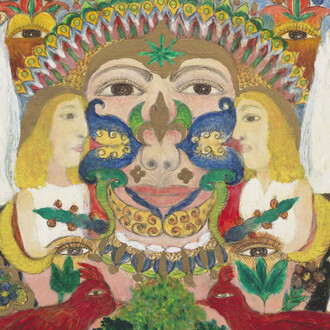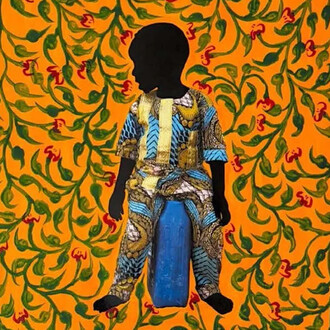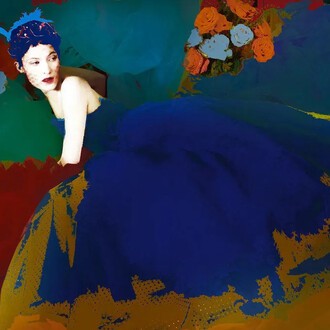Layer-by-layer features new work by Katherine Sandoz, Scotty Peek, Susan Maakestad and David Boyd.
Layered in each painting are investigations of place, of history and of context, and also of paint and of painting. Katherine Sandoz’s “uhuru” draws upon the landscape, language, and native flora of Maui, expressing to the viewer that “we are the smallest and nature is vast.” Scotty Peek’s “There & Not” uses his heavily wooded Southern surroundings to create paintings that are both specific and general, pushing his paint to dissolve the representational landscape into the abstract. Susan Maakestad’s “Splendid Day” turns to the urban landscape, attracted to the spaces between things and the unnoticed marginal spaces. Her paintings are vibrant and colorful while also speaking to the uncertainty of Climate Change. David Boyd’s “Ensemble” includes a selection of both urban landscapes and interior scenes, using his painting to capture a feeling and to hold a memory. The paintings in this show are held together by the layering of shapes, lines and colors, by the layering of leaves, sidewalks, and rocks, and by the layering of meaning, memory and history. They are held together, layer by layer, by the desire of each Artist to investigate and to describe the world around them.
uhuru
Katherine Sandoz’s recent series of paintings “uhuru” draws upon the layered landscape, language, and native flora of Maui, but contains its own version of physics. Beyond their painted plies, skewed shapes and transparent botanicals, these works situate the viewer in hardened lava, inside caves and on cliffs of falling rock, crouched beneath the mass of 2,400 miles of ocean in every direction. The paintings say, “we are the smallest and nature is vast,” stretching out to our first beginnings and our last endings. Here, the governing principle is a tenet unique to Hawaiian cosmology: the land is the first genealogical ancestor of its people. Aloha ʻāina (love of the land) integrates science, society and spirituality, making us duty-bound to serve, love and honor the land. These paintings are receipts of the mystery, depth, power and beauty of Maui Nui and her seven shield volcanoes.
Katherine utilizes multiple passages of transparent and opaque, warm and cool, textured and smooth layers of water-based media, creating dynamic compositions allowing the viewer to experience the subject matter from multiple vantage points at once. She holds an MFA in Painting and MFA in Illustration from the Savannah College of Art and Design, where she was Professor of Illustration from 1997 to 2005. She has been living and working in Savannah since the mid-1990s.
There & Not
Scotty Peek sees his work as a visual conflict of interest, creating representational landscape paintings from observation while pushing his paint to dissolve the scene into abstraction. Each painting fluctuates between chaos and order, moving back and forth over time. He views landscapes as an ideal vehicle for exploring this dichotomy and mark-making. The landscape changes from hour to hour, day to day, and presents ideal opportunities to drift in and out of abstraction. A landscape is able to be specific and general all at once. “I can paint a specific grandparent's backyard that might reflect a single person's gardening efforts over the past 60 years, but the same image can also speak to a generic Southeastern landscape,” says Scotty. “I think I may actually be a non-representational painter that's simply burdened with a love of representational study.”
Scotty Peek is a painter living in Columbia, South Carolina. He currently teaches Art at Heathwood Hall Episcopal School. He received his Master’s in Fine Arts from the University of South Carolina and his Bachelor’s of Fine Arts from Austin Peay State University.
Splendid Day
Susan Maakestad is attracted to the spaces between things, the unnoticed marginal spaces in the urban landscape. Likewise, as a painter she likes painting in the unsettling place between abstraction and naturalism. Her prosaic subjects have included big box store parking lots; pedestrian crosswalks at urban intersections; webcam traffic footage of midwestern freeways; and the landscape as viewed through municipal security cameras. Her paintings are empty of human activity but filled with brilliant color and recollected light, uplifting the banal subject and granting it majesty. Merely recording the natural world does not interest Susan. She is moved by the internal logic of the paintings themselves, a world where things make sense somehow. Where everything lives and breathes in tension held together by beauty and paint. “Pavement dissolves. Is it concrete or is it grass? Is it land or is it water?, asks Susan. “Landscape as we know it is mutating, disappearing.” Climate change has added anxiety, poignancy, and grief to the traditional concerns of the landscape genre. She is committed to the transformation of the urban environment even as she longs for the consolations of nature.
Based in Memphis, Tennessee, Susan earned an MFA from The University of Iowa, a B.A magna cum laude, and M.A. from Central Washington University. She was a Professor of Art at Memphis College of Art from 1997-2020.
Ensemble
David Boyd’s latest selection of paintings, titled “Ensemble” is a mix of plein air paintings and works referenced from photos. “I use my plein air work to “capture a feeling.” I use my camera to record a moment. Back in my studio I like to combine these into large-scale paintings of those things I wish I could keep forever. My paintings are my memories,” says David. He’s been allowing himself to “chase the muse” in 2023, choosing to focus on more unusual subjects for him - interior scenes and still lives - while also continuing to explore his usual subjects, alleyways, streets, and abandoned spaces.
A native of Newnan, Georgia, Boyd received a BFA in Illustration from the Savannah College of Art and Design. He has participated in and won awards at plein air events around the southeast and has been a part of multiple juried and solo exhibitions.
















